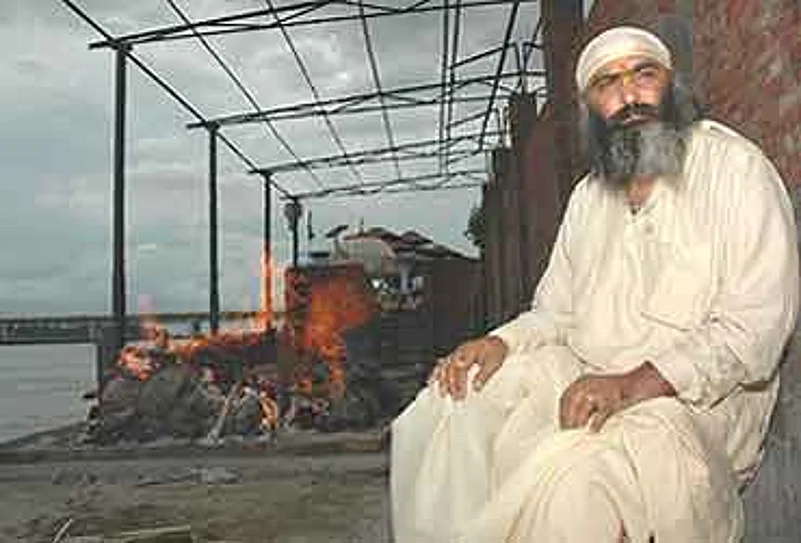
Rajesh Tripathi, 40 / Barhalgunj, UP
Independence Quotient: To offer people freedom from the privation and misery of death, he helped turn a decrepit crematorium into a pleasant social space
"The idea was to ensure that all grief-stricken people would find comfort in the place. If people feel proud of their birthplace, why should they feel sad about the last journey?"
John Varghese from Pennsylvania, US, was desperately trying to get in touch with his parents in Mharal, a village near Kalyan. Since the July 26 downpour in Maharashtra, all telecom links to this nook had broken down and there was no way of knowing if they were well. That was till John logged on to www.cloudburstmumbai.blogspot.com and www.mumbaihelp.blogspot.com. Within six hours of posting his concern on these portals, the Varghese family was traced and John was duly assured of their well-being. Hundreds of such hapless victims of the incessant rain benefited from the two blogs initiated by 39-year-old Peter Griffin.
A communication consultant and freelance journalist, Griffin’s idea was to collate all possible information to help disaster victims—weather forecasts, emergency numbers, contact details of rehab centres, hospitals, etc. Fellow bloggers also helped. "Now, we are planning to turn this into a permanent Mumbai Disaster Portal," says Griffin who wants to set up such sites for other cities, too. For Griffin, blogging is not just about writing self-obsessive, narcissistic diaries about love, lust and longing; it is about humanising a new technological fad. It is about overcoming a natural calamity by networking, about fostering a collective self-reliance in the face of a civic breakdown.
Griffin is one of our Indies—India’s most independent people who exemplify independence in their thoughts, spirit and action. They redefine the notion of freedom by stepping out of the limiting trap of I, me, mine, myself, and reaching out. They influence the lives of many. And most of them are doing it on their own, without any institutional crutches. From education to environment, health to habitation, conservation to cinema; their concerns are diverse, distinct and decidedly compelling.

Peter Griffin, 39 / Mumbai
IQ: His disaster blogs on the recent torrential rains and the December tsunami provided critical online relief.
"The first reaction was to volunteer but for some reason I couldn’t. The next best thing was helping from where I was."
- In Barhalgunj, UP, Rajesh Tripathi, 40, has initiated a movement to transform a run-down crematorium into a unique social space. Muktipath, situated on the Gorakhpur-Varanasi highway, stands out not just for the 52-foot Shiva statue but also for its herbal garden, aquarium, 1,000-seater auditorium, meditation room and a library. Devotional songs are played here 24x7 and religious discourses and yoga classes are held regularly.
- In Bangalore, C.B. Rammohan, 29, a former Karnataka basketball player, conceived the ‘Beyond the Rim’ project where he teaches basketball to young girls from neighbouring slums in Jayanagar. They not only learn the game but also life-skills like communication, cooperation, teamwork and decision-making.
- In Puri, Orissa, Susant Misra, 40, an FTII (Film and Television Institute of India, Pune) graduate, and some friends, started the Bring Your Own Film Festival (BYOFF) last year. This unique annual celebration of fringe films has no hierarchies, no juries, no selection process, no competition and no awards. Just pay a fee and screen your movie, even if it’s a debut home video.
- Sahir Raza, a student of Delhi’s St Stephen’s College, held a photo exhibition on the Gujarat riots when he was merely 17. He travelled through the state, spreading the message of communal harmony, organised rock concerts for peace and is now doing a project on the syncretic Sufi shrines of Gujarat.
Are they all the children of liberalisation who aren’t supposed to know the spelling of altruism? Is this the generation of zippies for whom life is all about trance parties, clubs, malls, mobiles and credit cards, who SMS more than write letters, who chat more than converse, who earn and consume like there’s no tomorrow?
Thank India’s diversity, but every stereotype manages to throw up an opposite and positive face.
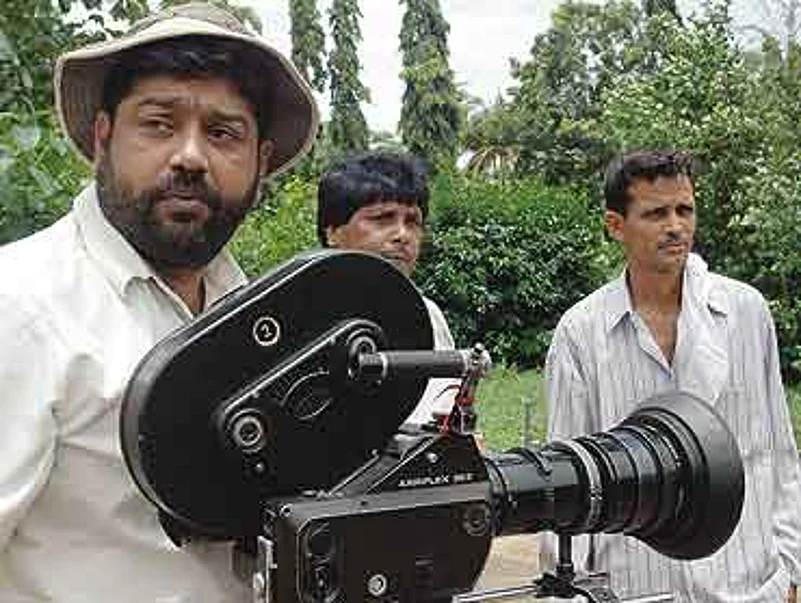
Susant Misra, 40 / Puri, Orissa
IQ: Initiated a platform for fringe films where there are no hierarchies, juries, selection, competition or awards. Pay a fee, screen your film.
"The digital format is catching up...anyone can make a film with a handycam. Ours is an avenue to showcase these independent efforts."
Shripad Dharmadhikari, 43, who runs Manthan Adhyayan Kendra in Badwani, MP, says the drive to work for one’s own interest, for power and money, is integral to human beings. But, there is an equally powerful urge to work for justice, equity and larger public interest. "I am confident that this ‘good drive’ will find its own ways to express itself, though I feel the prevailing conditions make it difficult," he says.
This ‘good drive’ is what the Indies seem to have by the bucketful. They are committed to their causes without having an eye for any reward, recognition, publicity or appreciation.
Like Debaranjan Sarangi, who has been struggling non-violently along with the tribals against the bauxite multinationals in Kashipur, Orissa. He refused to be photographed, nor did he speak to us about himself: "It’s the issue you should write about." Similarly, Tripathi thought of the new-age crematorium not to grab newspaper headlines but to dignify the dead and to alleviate the people’s pain and sorrow in their moment of crisis. "If people feel proud of their birth place why should they feel sad about the last journey?" he asks.
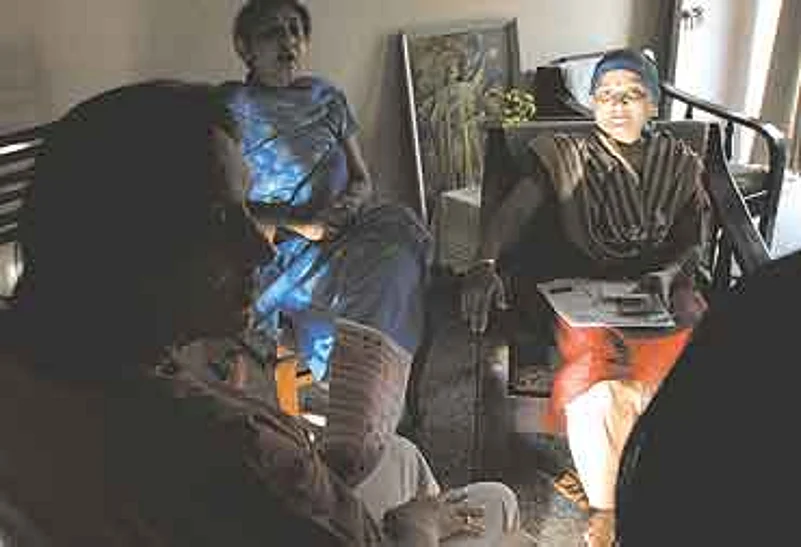
R. Anuradha, 37 / New Delhi
IQ: Diagnosed with breast cancer, she decided to educate the other patients about the disease. Has written Indradhanush Ke Peeche Peeche, a book on her fight with the disease.
"I had to go out there and do my bit. I could not have let them (patients) give up on life for lack of knowledge. It is a continuous battle in favour of life."
R. Anuradha, an officer with DD News, had the courage to find social relevance even in her worst hour. Diagnosed with breast cancer in 1998, not only did she not fall in the self-pity trap but decided to help other patients with little or no knowledge about the disease, the medication and its side-effects. "I thought they might lose the battle due to lack of information. I had the tools and the knowledge to help them fight the disease better," she says. She held informal chat sessions in the hospital’s waiting room, prepared information leaflets and arranged breast cancer awareness camps. Her most poignant tool for reaching out is a delicately intimate book, Indradhanush Ke Peeche Peeche (Behind the Rainbow), the first of its kind in Hindi, where she has penned her experiences of battling cancer.
Clearly, for the Indies, life is not about personal milestones but a public conscience. It’s not about seeking emancipation for the self but taking the concept of free will and choice down to the grassroots.It’s not about cushy jobs and lucrative careers, but about bringing a positive social transformation.
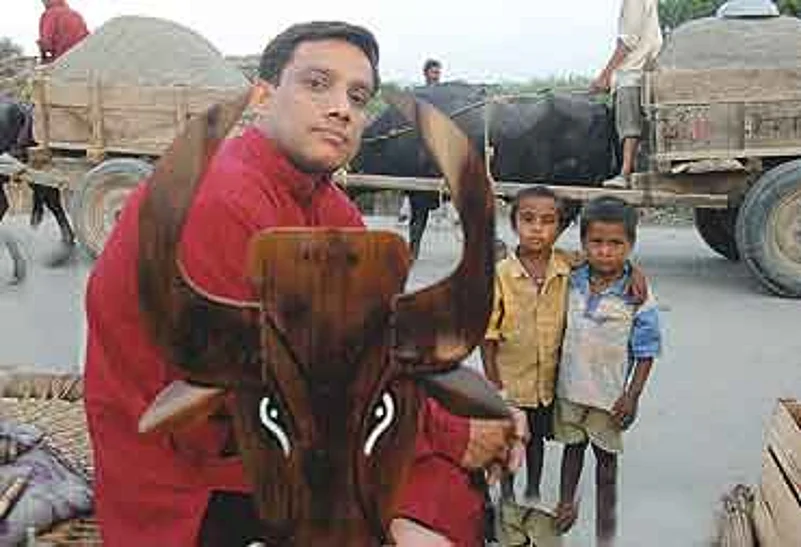
Aman Namra, 35 / New Delhi
IQ: Teaches communication and journalistic skills to rural activists and the common people in an effort to take freedom of expression right down to the grassroots.
"The idea is to build barefoot journalists who can make unheard voices reach out to the world at a time when media has become aligned more with market forces than social issues."
So, Aman Namra, 35, didn’t think twice before quitting as a journalist when he realised that developmental issues were unlikely to get enough space in mainstream media. As part of the communications network, Charkha, he now teaches communication skills to rural activists so that they can put forth their views and problems more effectively through radio shows, informal newspapers and wall posters. "The idea is to build barefoot journalists, activists who can make unheard voices reach out to the world," he says.
Bucking the trend also means getting totally isolated from the comforts of the mainstream.

Divay Gupta, 33 / New Delhi
IQ: Protects, conserves and restores the spirit of our heritage sites instead of creating spanking new malls, bars and condominiums.
"With Each new project I feel overcome by humility. Each project helps discover our links to the past and the future."
Take Divay Gupta, the 33-year-old Delhi-based conservation architect and consulting director, programmes, INTACH. Like most of his batchmates, he could have been building signature homes, bars and glitzy malls. But he preferred to free himself of his own creative ego. He restores heritage sites, while retaining the spirit of its original creator and "without ever imposing my own views". His projects include restoring six landmark buildings in Bhuj after the 2001 quake and the restoration of Dorje Chemo Temple in Ladakh’s Shey village. Ask him if it matters that he might be earning just a quarter of his savvy batchmates and he says flatly: "I just can’t imagine designing homes or malls for rich, baroque people. I’d rather be part of the revival movement."
Be it architecture or communications, sports or cinema, the Indies see social causes in atypical, uncommon areas. For Rammohan, sports is a platform for social inclusion of the marginalised and needy. "Beyond the Rim sets for itself the agenda of assessing the applicability of sports in developmental programmes; source, orient, train and deploy volunteers from the sporting fraternity," he says. The BYOFF gang organises India’s "Woodstock of cinema" for "total freedom of images"." The digital format is catching up, cinema as a medium is becoming accessible to more people, and anyone can make a film with a handycam. We need a platform for such efforts," says Misra.

Madhuri Krishnaswamy / Barwani, MP
IQ: Spearheaded the tribal movement for accountability from the administration and champions their right to self-determination.
"Tribal communities have a capacity to have a viable economy. Instead, the government is ensuring that they are displaced."
Minoo Venkateshwaran of Delhi-based Pravah, a non-profit organisation, feels young people "may be cynical but equally influenced by positive ideas". According to Shaheen Mistry of Mumbai’s Akanksha Foundation, people do "identify with the idea of giving".Moreover, they make such efforts because they want to, not as an obligation to society.Madhuri Krishnaswamy, daughter of a former air vice-marshal, moved out of Delhi’s comforts in 1993 to get involved in the struggle of tribals."I was working in the city’s slums when I realised the people who lived there came from the interiors of Madhya Pradesh and Chhattisgarh. I travelled to these areas to trace the cause of such displacement," she says.Today, she lives in Barwani, MP, in a small room with a single bulb, a gas cylinder, a sleeping bag, a few books and a cause: self-determination and self-sufficiency for the tribals.
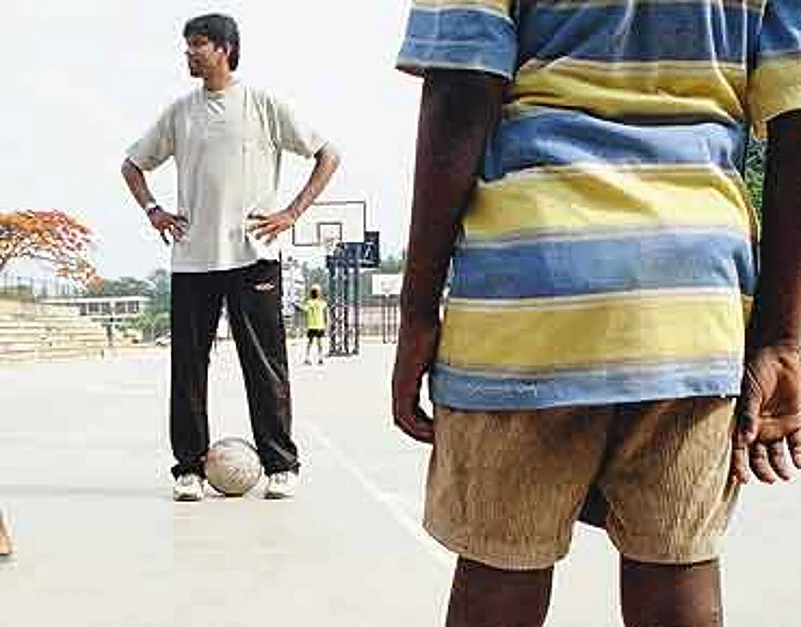
C.B. Rammohan, 29 / Bangalore, Karnataka
IQ: Uses sports as a means for social inclusion of the marginalised and to instil life-skills like teamwork and decision-making.
"We need to wake up from the delusions of independence. the biggest demons one needs to overcome are within us."
The Indies may have been motivated by a highly individualistic vision but have moved ahead by involving people around them. For building Muktipath, Tripathi and 20 of his friends pooled in Rs 5,000 each. When work started, locals began donating. In about two years, they had collected Rs 2 crore from their own district comprising 1,200 villages.
Ultimately, it all boils down to mobilising the community for its own good. Madhuri organised the tribals under the banner of Jagrit Adivasi Dalit Sanghatan in 1997 to strengthen the demands for accountability and transparency from the administration. They are also struggling to take charge of the developmental activities. "We have to convince the government that tribal communities have the capacity for a viable economy," she says.
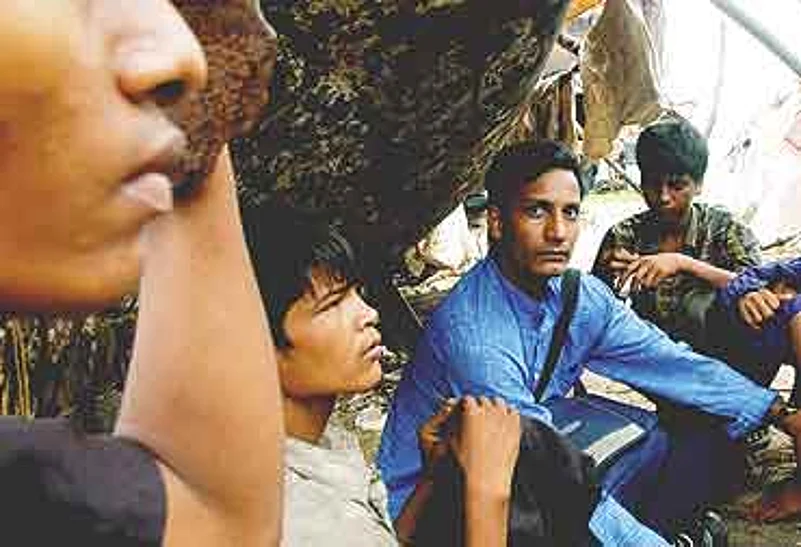
Abhishek Bharadwaj, 27 / Mumbai
IQ: Working for the rights of the homeless, creating spaces for pariahs within society and giving them the freedom to belong.
"This is a very vulnerable population, yet, it is difficult to get funding for them because they don’t have homes and are hard to track."
Abhishek Bharadwaj, a 27-year-old graduate of the Tata Institute of Social Sciences, has been mobilising Mumbai’s homeless. Not only has he been working to get them night shelters, ration cards and basic medical facilities, he has also organised sensitisation programmes so that they become aware of their rights. "The journey of homeless people, from the cradle to the deathbed, is fraught with undue hardships, humiliation and disgrace. We just want to help restore their dignity," he says.
In a world of cut-throat competition and the mad scramble for success, what makes these Indies take such idealistic routes?
Much of it may have to do with the changing image of the developmental sector itself. "It’s become professionalised. People feel empowered enough to bring about a change," says Mistry. However, Venkateshwaran feels that most people may want to do developmental work but don’t know how. "They need to be imparted with skills." Perhaps, that’s the reason why some seek strength in numbers, consciously becoming part of a movement than treading it alone. Working collectively ensures that primacy is given to the cause and prevents it from being hijacked by or identified with one person. Like Bangalore’s Alternative Law Forum which was started in March 2000 as a collective of lawyers in the age group of 23-33. They believe there is a need for an alternative practice of law which would respond to issues of social and economic justice. They provide legal services to the poor and marginalised and those whom advocates are unwilling to represent such as unorganised labour, sex workers and the third sex.

Anil Kumar, 37 / Kannur, Kerala
IQ: Part of a group of young engineers who oppose big dams and are working on alternate modes of energy generation.
"Development relies on judicious use of resources.If we have to live in harmony with nature, we have to minimise our needs."
Similarly, in Kannur, Kerala, there’s the People’s School of Energy, a group of young engineers who consider themselves more of environmentalists and are opposing big dams. Two of the members, 37-year-olds C.G.Madhusoodanan and Anil Kumar, were winners of the MIT Sloan’s Indus Technovator award in 2003 for energy-related grassroots innovation. They believe that sustainable development relies heavily on the judicious use of natural resources. They work on alternative modes of energy generation and distribution and micro-hydel projects.
Whether individually or in a group, the Indies have a continuing commitment to their causes. R. Anuradha has been diagnosed with breast cancer again but, even now, she goes to informal gatherings arranged at friends’ places to spread awareness about the disease. "It is a continuous battle in favour of life," she says.
For Peter Griffin, the collaborative online relief work didn’t just happen with the Mumbai rains, it actually started in December 2004 when he, along with fellow bloggers, set up the South East Asia Earthquake and Tsunami (SEA-EAT) blog which helped locate many lost friends and relatives. Griffin and Co are now thinking of something bigger. Like creating a world-wide volunteer network. He doesn’t need to look very far for that. Just start with the Indies.
By Namrata Joshi with G. Rajaraman, Pramila N. Phatarphekar, Saikat Datta, Shobita Dhar and Alpana Sarangi in Delhi, Saumya Roy in Mumbai, Sugata Srinivasaraju in Bangalore, Sutapa Mukerjee in Lucknow, K.S. Shaini in Bhopal















